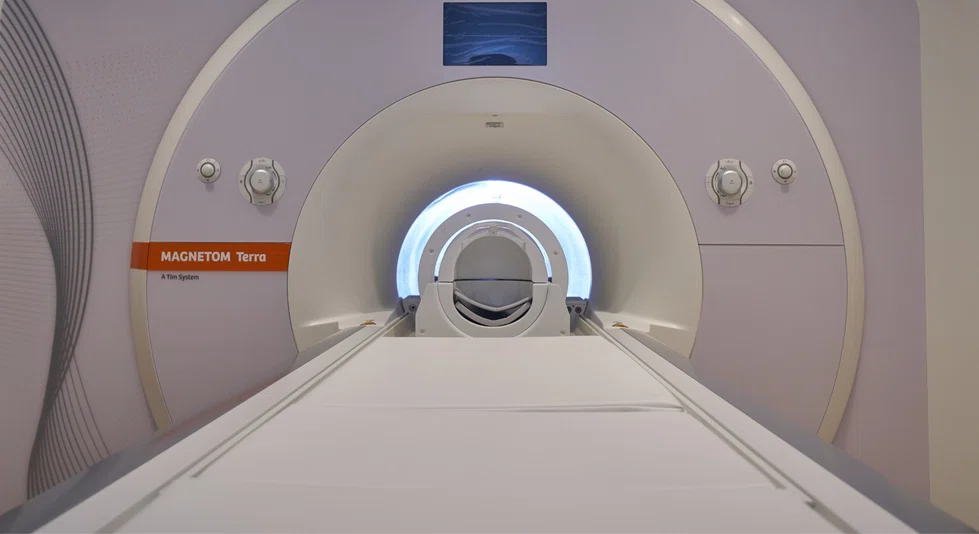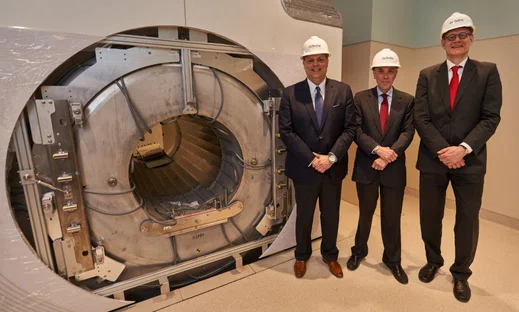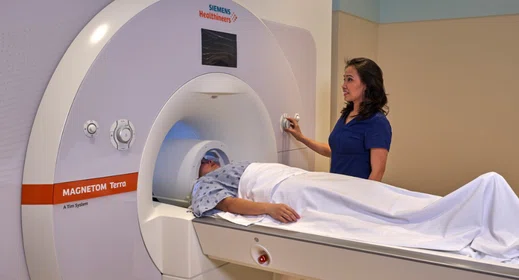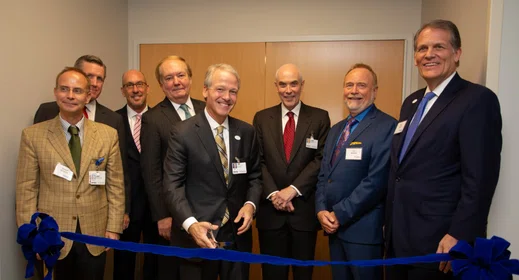
President’s letter
2020 Metrics
Cycle of Translation
Visionary Gifts

Discovery to Clinic

Innovative Education

Translational Luminaries
Introduction
The Ann Kimbell and John W. Johnson Center for Cellular Therapeutics
The Fondren Food & Health Alliance and The Fondren Inflammation Center
Cockrell Center for Advanced Therapeutics
Paula and Joseph C. “Rusty” Walter III Translational Research Initiative
Jerold B. Katz Academy of Translational Research
result
Outcomes Research
Precision Medicine
CPRIT Funding to Drive New Discoveries in Cancer Therapeutics
Siemens Healthineers and Houston Methodist Imaging Innovation Hub Empowers Researchers to Push the Boundaries
Novel Monoclonal Antibody Treatment Halts Tumor Growth in Deadly Ovarian and Pancreatic Cancers
Houston Methodist Institute for Technology, Innovation & Education (MITIESM)
Can Devices Provide A New Treatment Option for Glioblastoma?
Houston Methodist Hospital’s new Paula and Joseph C. “Rusty” Walter III Tower offers the Most advanced treatments and innovations available
Neuroimaging Offers New Insights into Neurodegeneration
COVID-19 Studies
Restorative Medicine
Houston Methodist and Rice University Launch Center for Translational Neural Prosthetics and Interfaces
Non-invasive Spinal Stimulation Enables Paralyzed People to Stand Unassisted
Dissolvable Implants Enhance the Body’s Ability to Heal Broken Bones
Cell Encapsulation May Hold the Key to Preventing Cell Transplant Rejection
Revolutionizing the Future of Complex Valve Disease Management



Science in Service
of
Medicineresult
President's letter
2020 Metrics
Cycle of Translation
Visionary Gifts of Hope


Introduction

The Ann Kimbell and John W. Johnson Center for Cellular Therapeutics

The Fondren Food & Health Alliance and The Fondren Inflammation Center

Cockrell Center for Advanced Therapeutics

Paula and Joseph C. “Rusty” Walter III Translational Research Initiative

Jerold B. Katz Academy of Translational Research

From Discovery to Clinic


Introduction

Restorative Medicine


Houston Methodist and Rice University Launch Center for Translational Neural Prosthetics and Interfaces

Non-invasive Spinal Stimulation Enables Paralyzed People to Stand Unassisted

Dissolvable Implants Enhance the Body’s Ability to Heal Broken Bones

Cell Encapsulation May Hold the Key to Preventing Cell Transplant Rejection

Revolutionizing the Future of Complex Valve Disease Management

Precision Medicine


CPRIT Funding to Drive New Discoveries in Cancer Therapeutics


An Innovative New Tool to Enable Drug Discovery and Personalized Medicine


Devising a Novel Combination Treatment for Aggressive Double-hit Lymphoma



Expanding the RNAcore to Encompass the Entire Cycle of a Cure


Siemens Healthineers and Houston Methodist Imaging Innovation Hub Empowers Researchers to Push the Boundaries

Novel Monoclonal Antibody Treatment Halts Tumor Growth in Deadly Ovarian and Pancreatic Cancers

Houston Methodist Institute for Technology, Innovation & Education (MITIESM)


Surgical Technology Developed in MITIE Gains FDA Approval


Pushing the Frontier of the Robotics Revolution

Can Devices Provide A New Treatment Option for Glioblastoma?

Houston Methodist Hospital’s new Paula and Joseph C. “Rusty” Walter III Tower offers the Most advanced treatments and innovations available

Neuroimaging Offers New Insights into Neurodegeneration

Translational Luminaries




Discovery to Clinic

Precision Medicine
Imaging Innovation Hub Empowers Researchers to Push the Boundaries
Siemens Healthineers and Houston Methodist
Imaging Innovation Hub Empowers Researchers to Push the Boundaries

The Houston Methodist Translational Imaging Center provides clinicians and researchers across the Texas Medical Center with access to advanced, high-performance imaging equipment to create a direct translational environment for innovation. Access to such high-throughput multi-modality tools in a translational research setting is seen in very few centers in the world.
Through a Siemens Healthineers and Houston Methodist multi-year consortium agreement, the Research Institute is home to one of the world’s most powerful MRI machines – the Siemens 7 Tesla (7T) MAGNETOM Terra, which is the first 7T MRI of its kind in Texas and the first 7T MRI scanner approved for clinical use in the U.S. This agreement also emphasizes an interventional imaging partnership that allows clinicians and researchers to collaborate on developing new technologies for robotic and image guided navigation.

The higher spatial resolution and improved contrast capabilities of the 7T MRI is being harnessed in clinical studies to more accurately localize the lesions that may be responsible for seizures in epileptic patients with focal cortical dysplasia, the most common cause of medically refractory epilepsy in children and the second/third most common cause of medically intractable seizures in adults. For epilepsy patients who are good candidates for surgery, equipping the surgeon with more detailed information on the lesion sites has the potential to significantly improve surgical outcomes.

Houston Methodist’s collaboration with Siemens is also enabling safer, more autonomous imaging with intracardiac echocardiography or ICE, which allows physicians to focus their efforts and time on delivering therapy rather than dividing their attention with acquiring images. The use of robotic- and AI-assisted ICE imaging may provide simple and intuitive procedural navigation. Chun Huie Lin, MD, PhD, assistant professor of cardiology, is leading an effort to introduce image-based control for semi-autonomous robotic ICE imaging and to optimize the physician-robot interface.
7T MRI Brain Scan
3T MRI Brain Scan
The 7T is also allowing physicians to better monitor patients with small cerebral aneurysms over time and tailor their course of treatment as needed. Traditionally, followup for such patients is conducted with CT angiographic or digital subtraction angiographic examinations. These procedures use radiation and contrast load that pose a risk of renal failure and contrast reactions apart from the risks of cumulative radiation. Although the widely available 3T clinical MRI can circumvent these undesirable effects, it has its own limitations. The 7T clinical MRI scanner may provide a good alternative as its superior spatial resolution and shortened T1 relaxation time of stationary tissue results in superior contrast to blood than current clinical 3T and thereby may prominently display the lumen of the aneurysm and the parent vessel. Experienced endovascular neurosurgeons and neuro- interventional radiologists plan to compare magnetic resonance angiographic images with clinical standard CT angiographic or digital subtraction angiographic acquisitions to determine when the 7T provides a significant advantage.


A ribbon cutting ceremony to celebrate the new imaging center and its capabilities was held on June 26. Leaders from Houston Methodist, Siemens and across the Texas
Medical Center enjoyed tours and demonstrations of the most advanced, high-performance equipment for imaging research and innovation.
More from Discovery to Clinic








